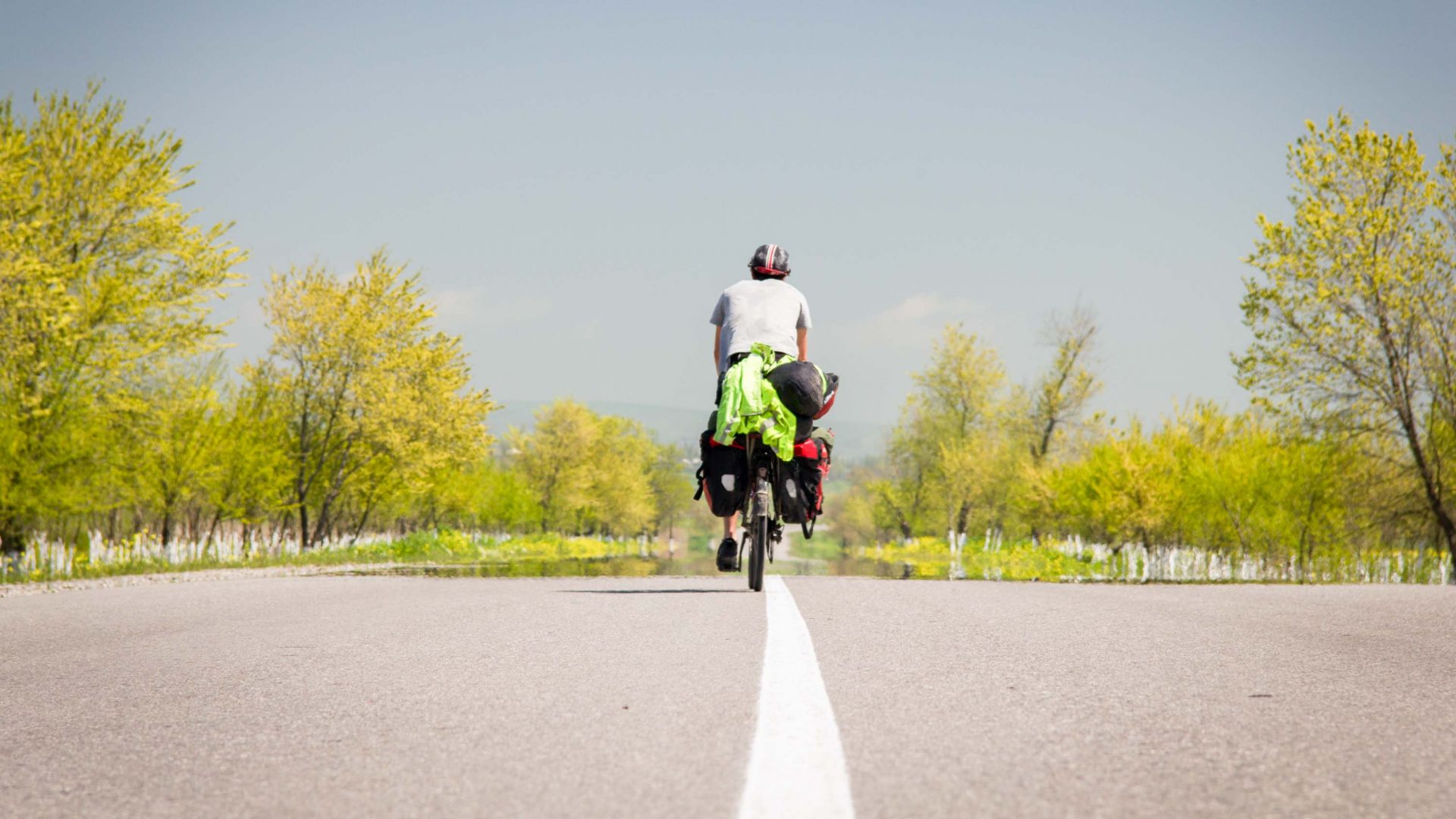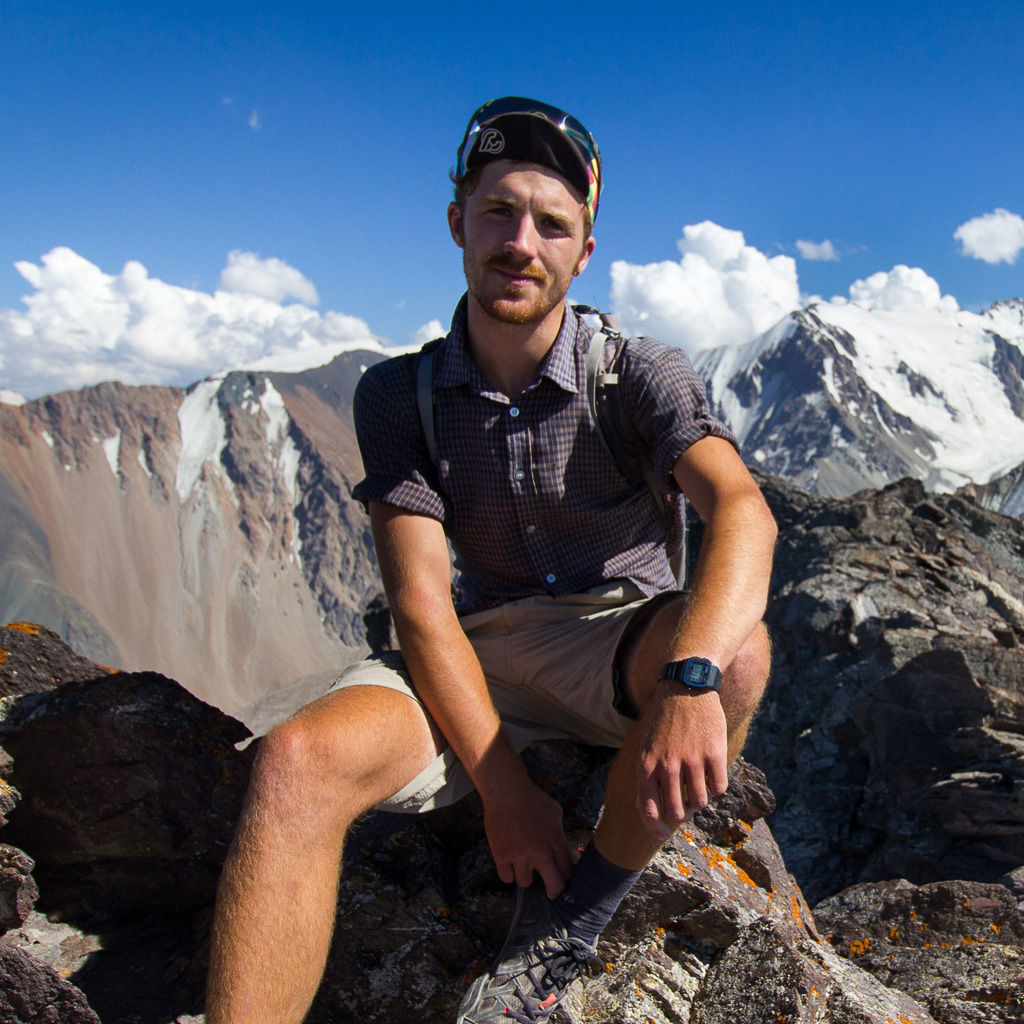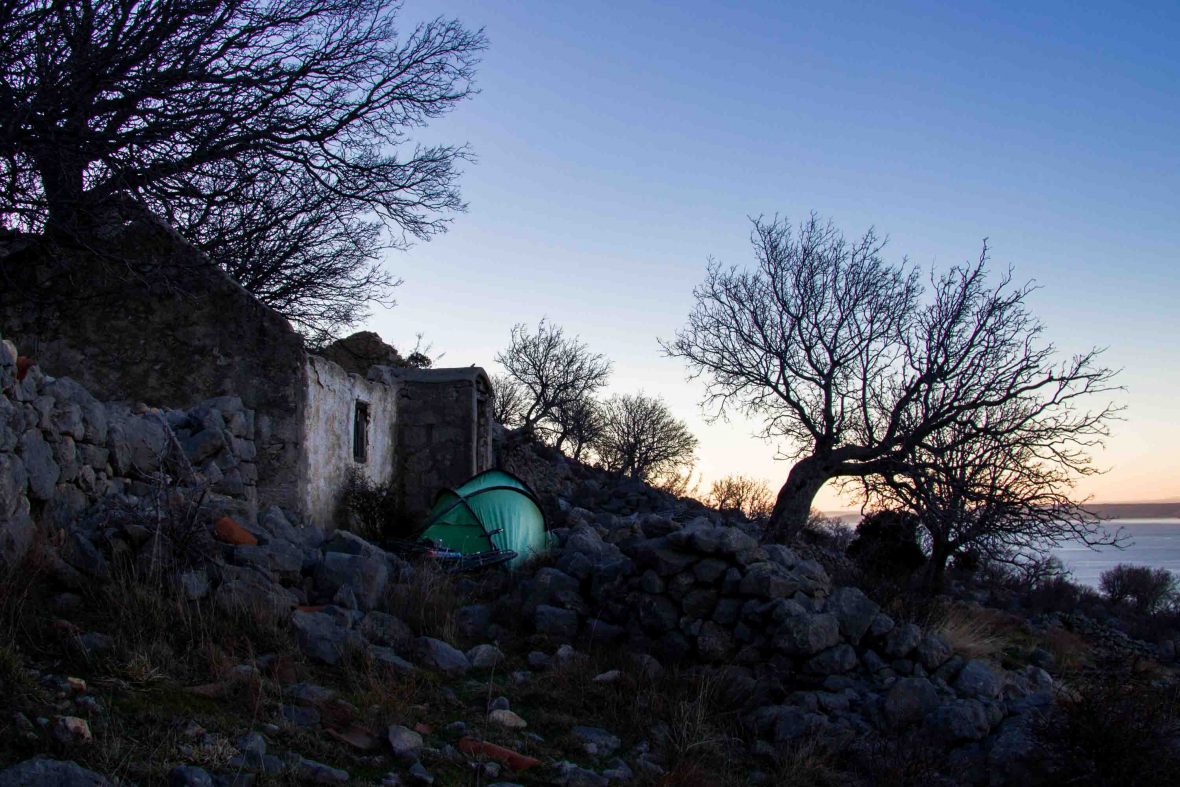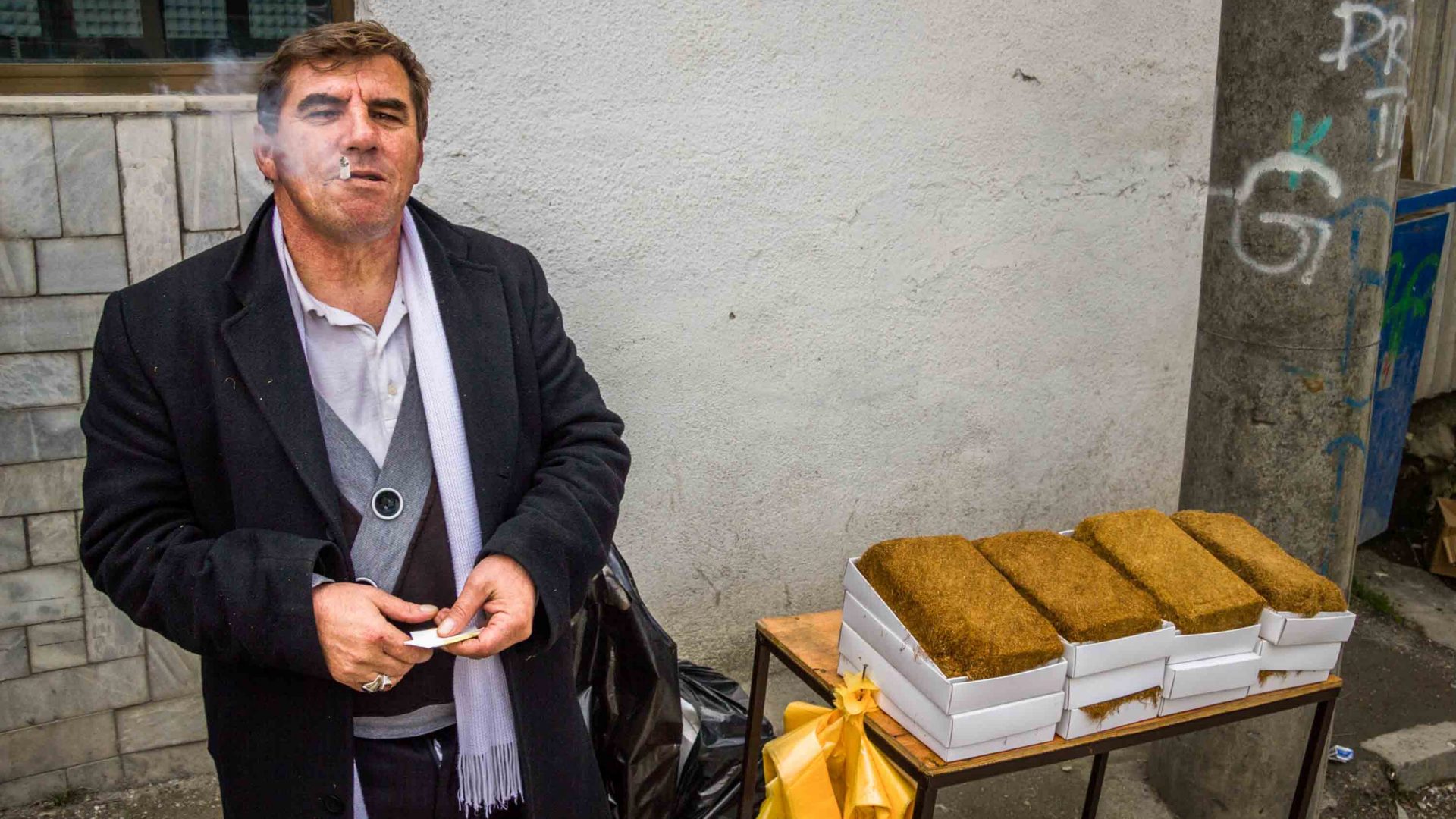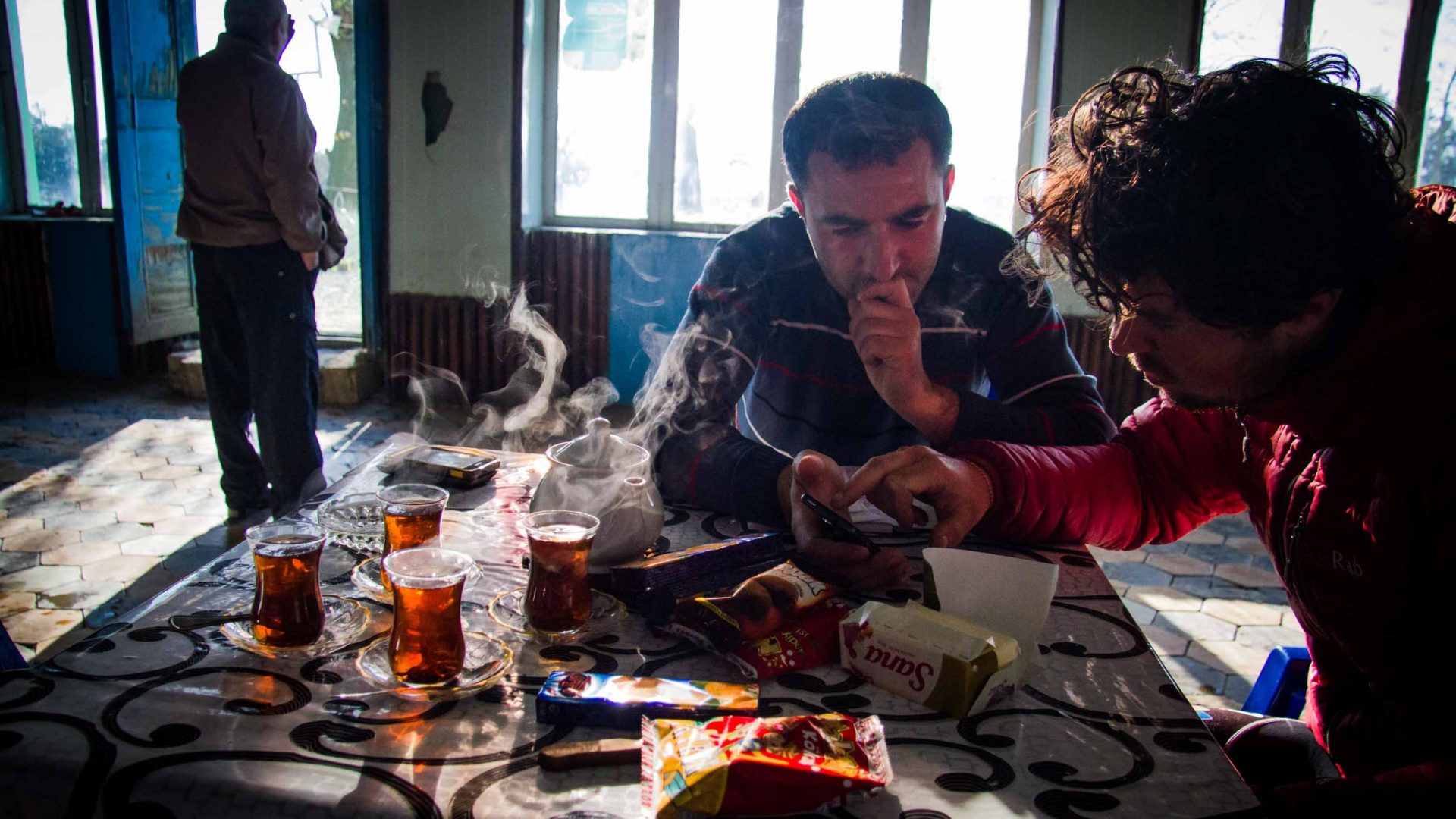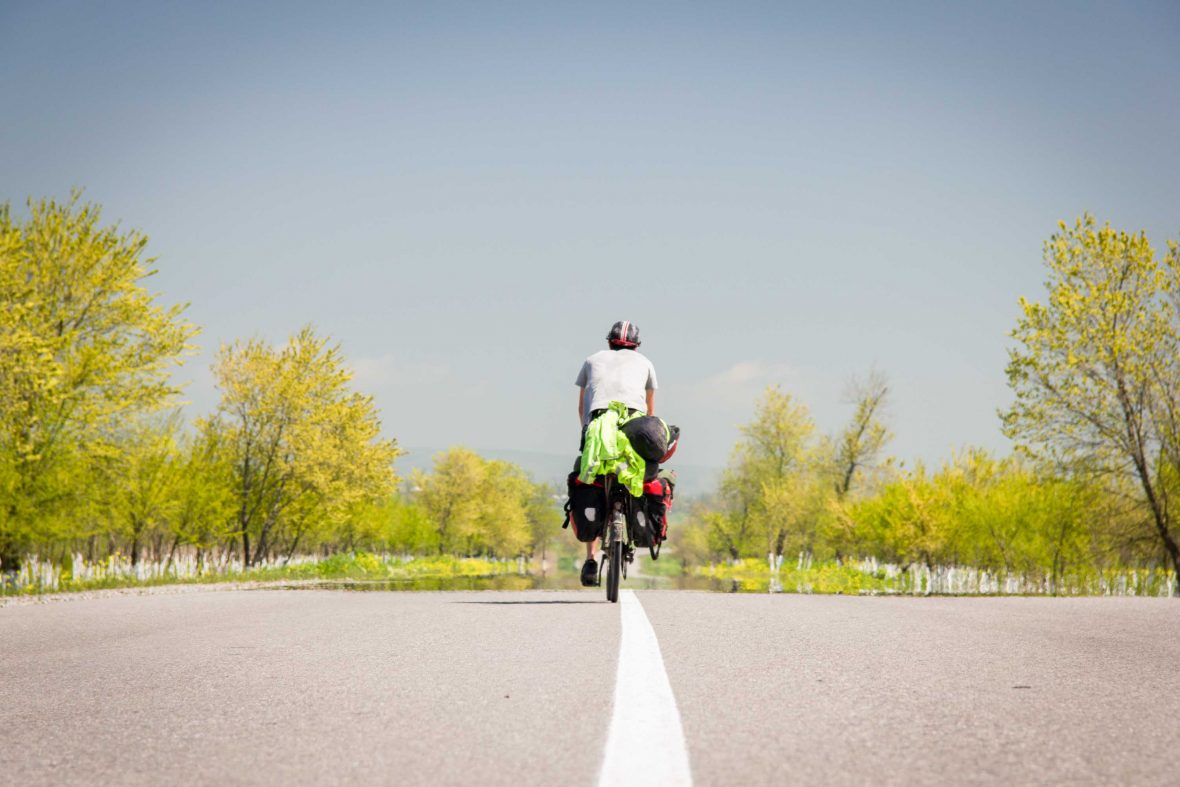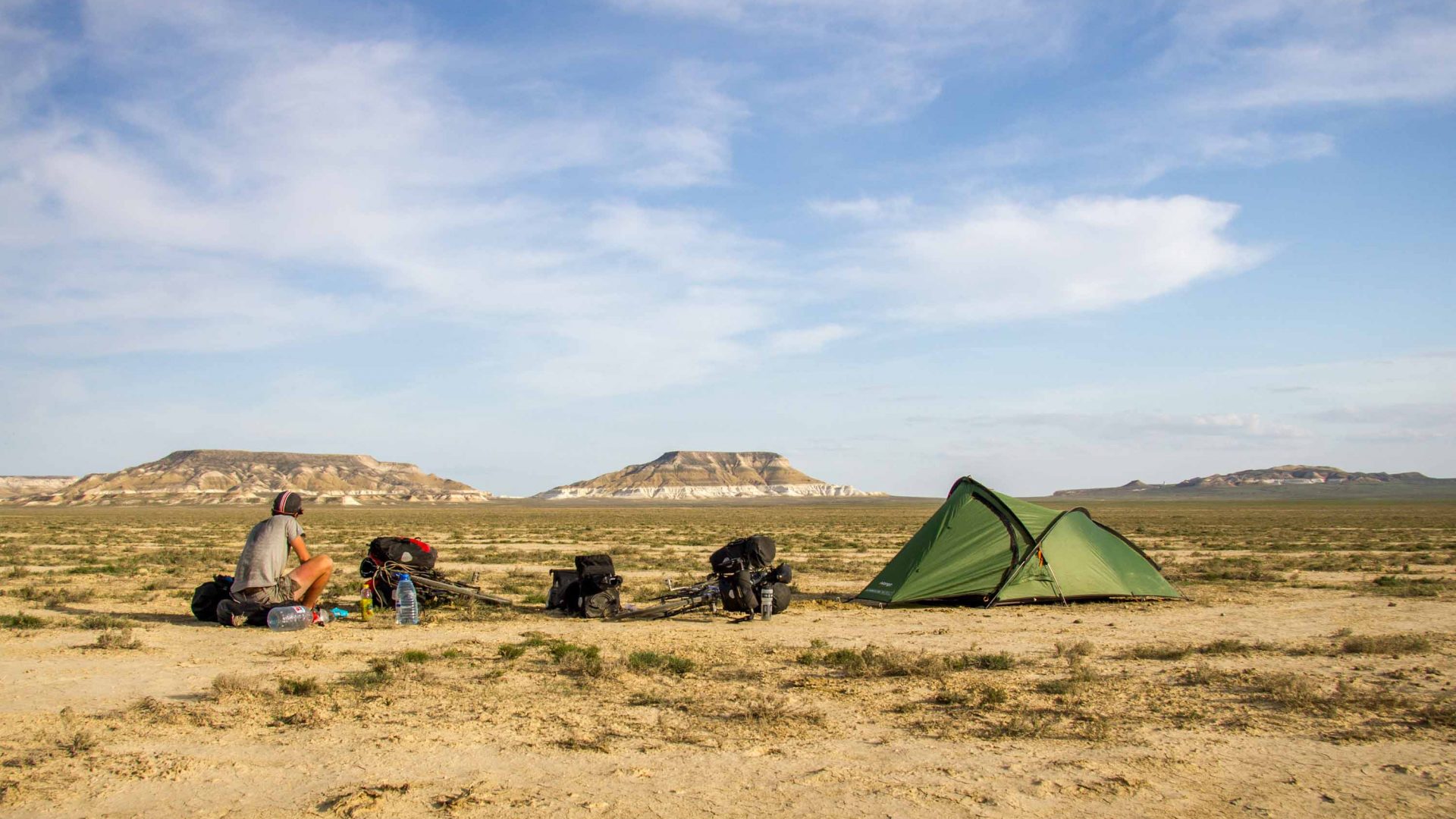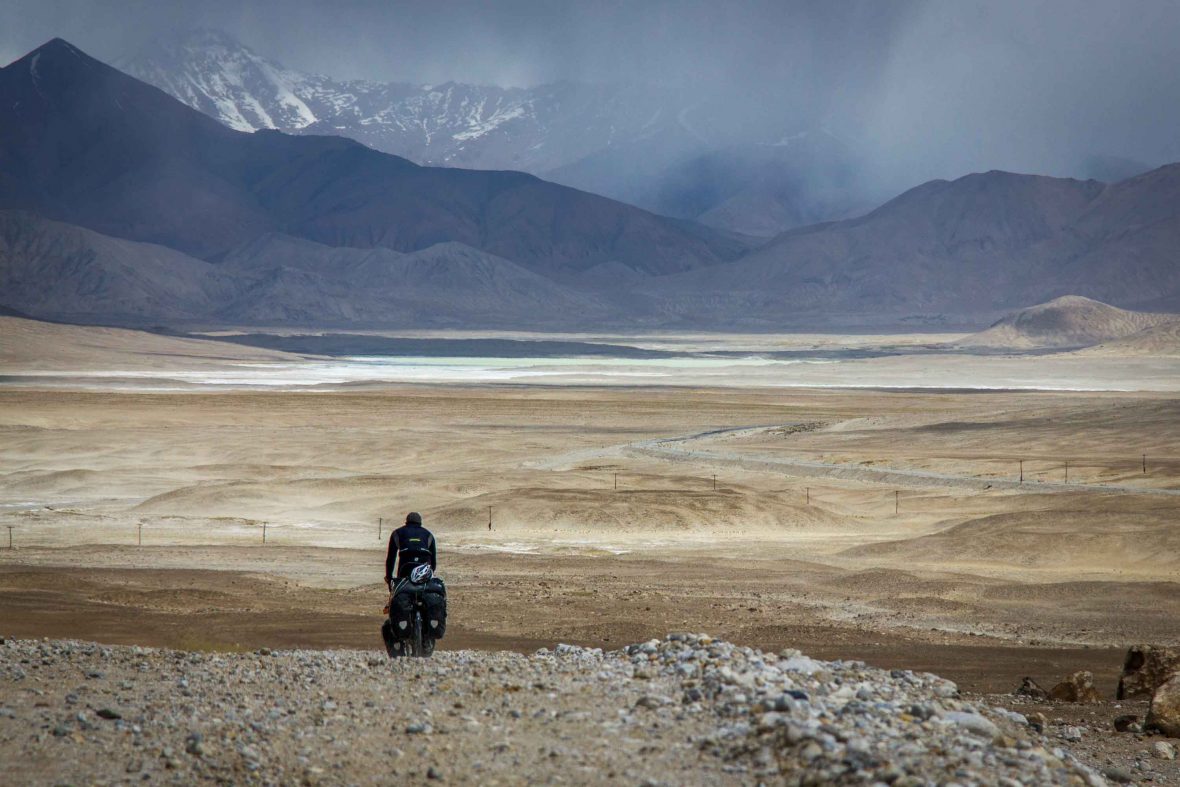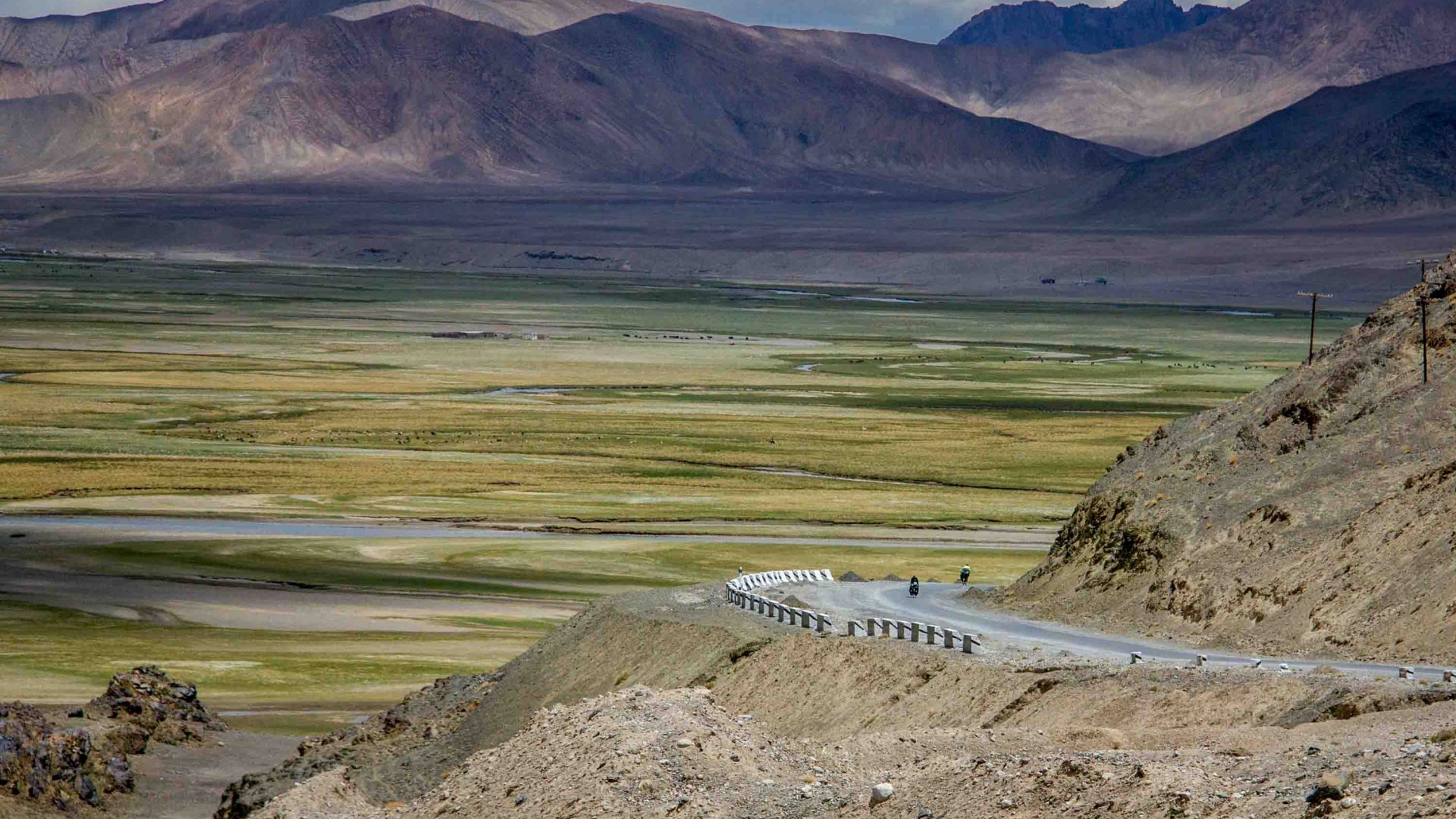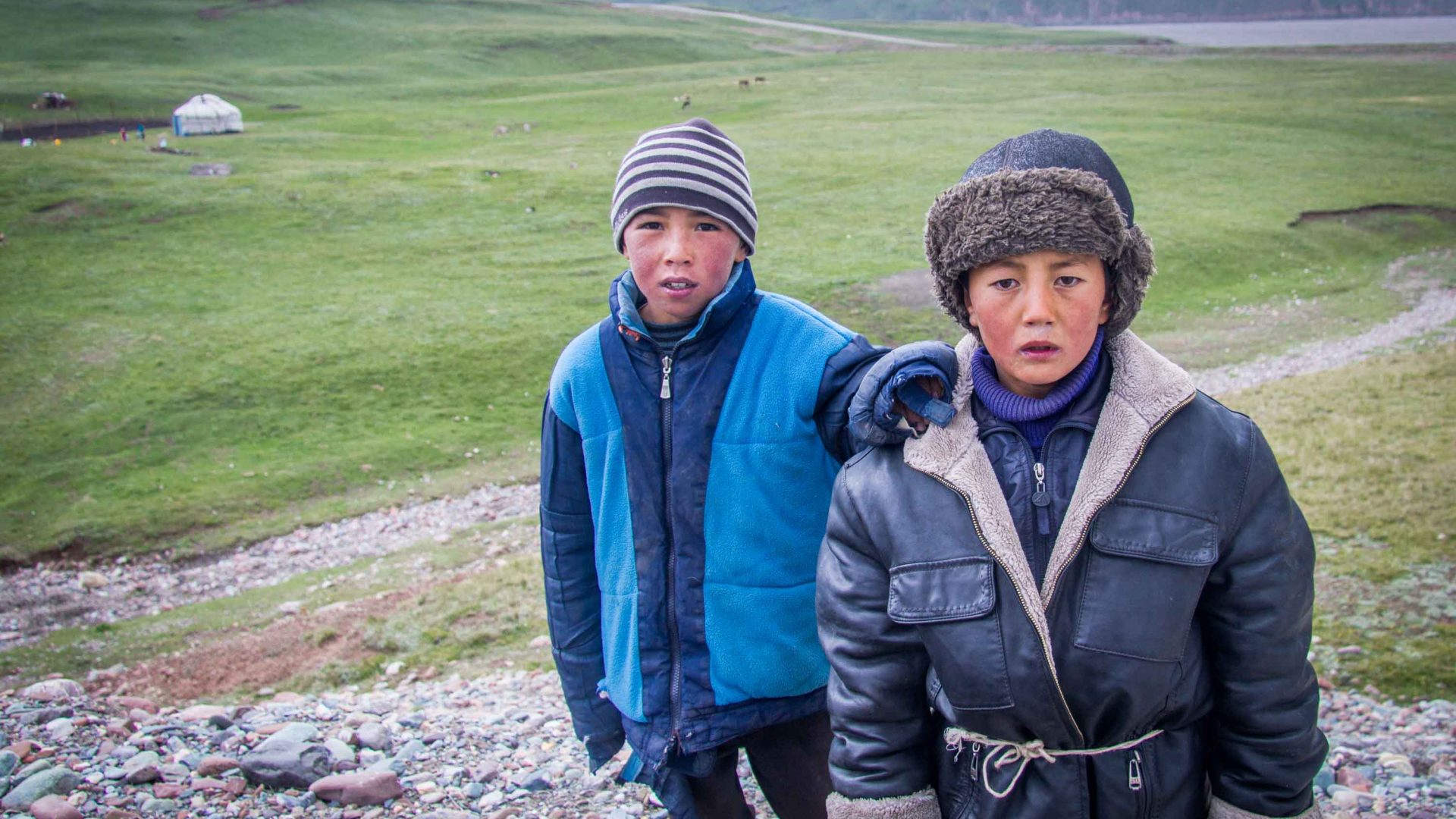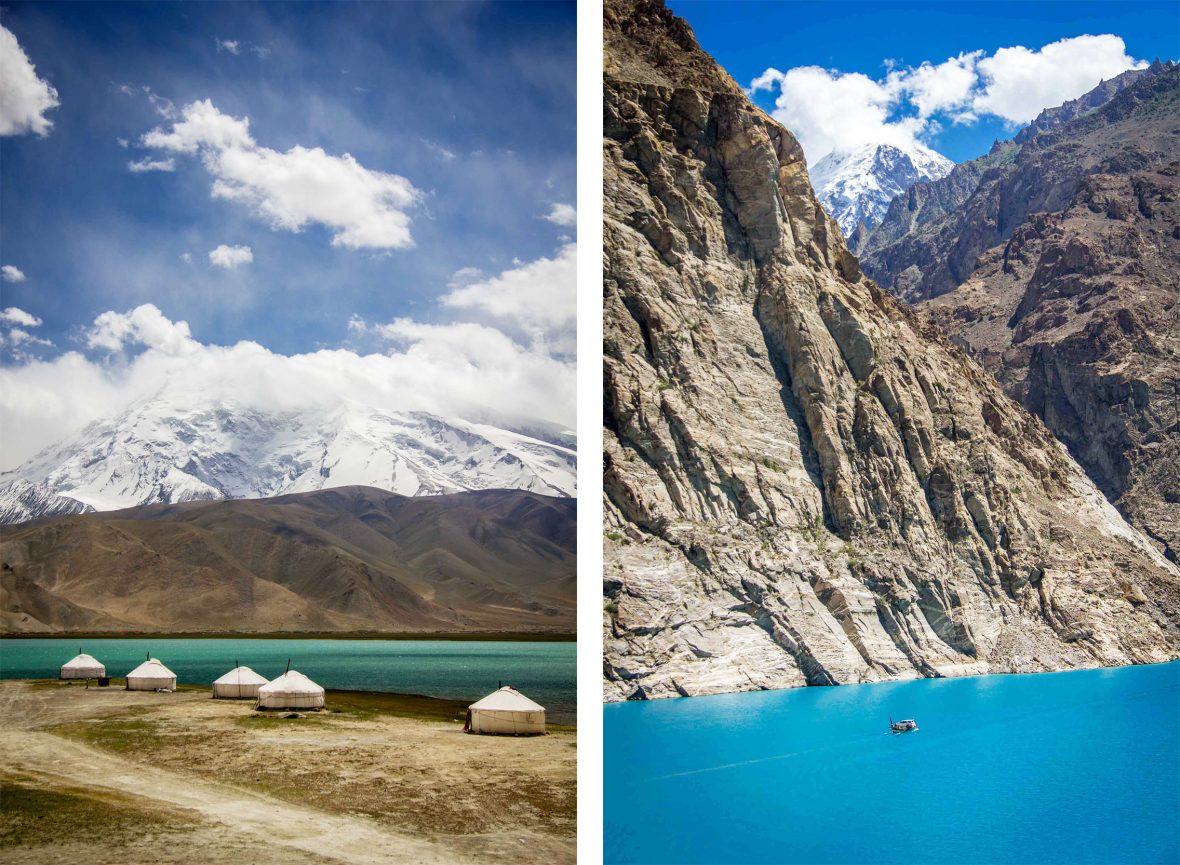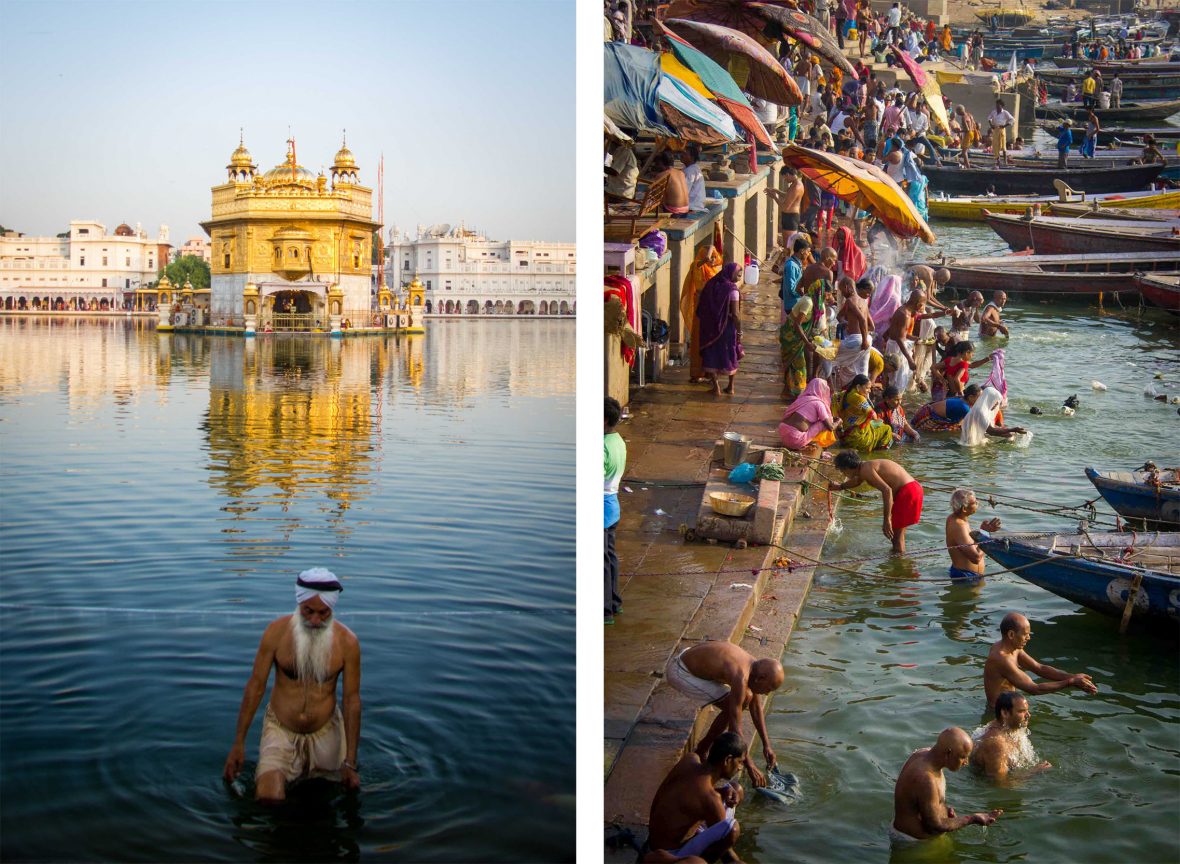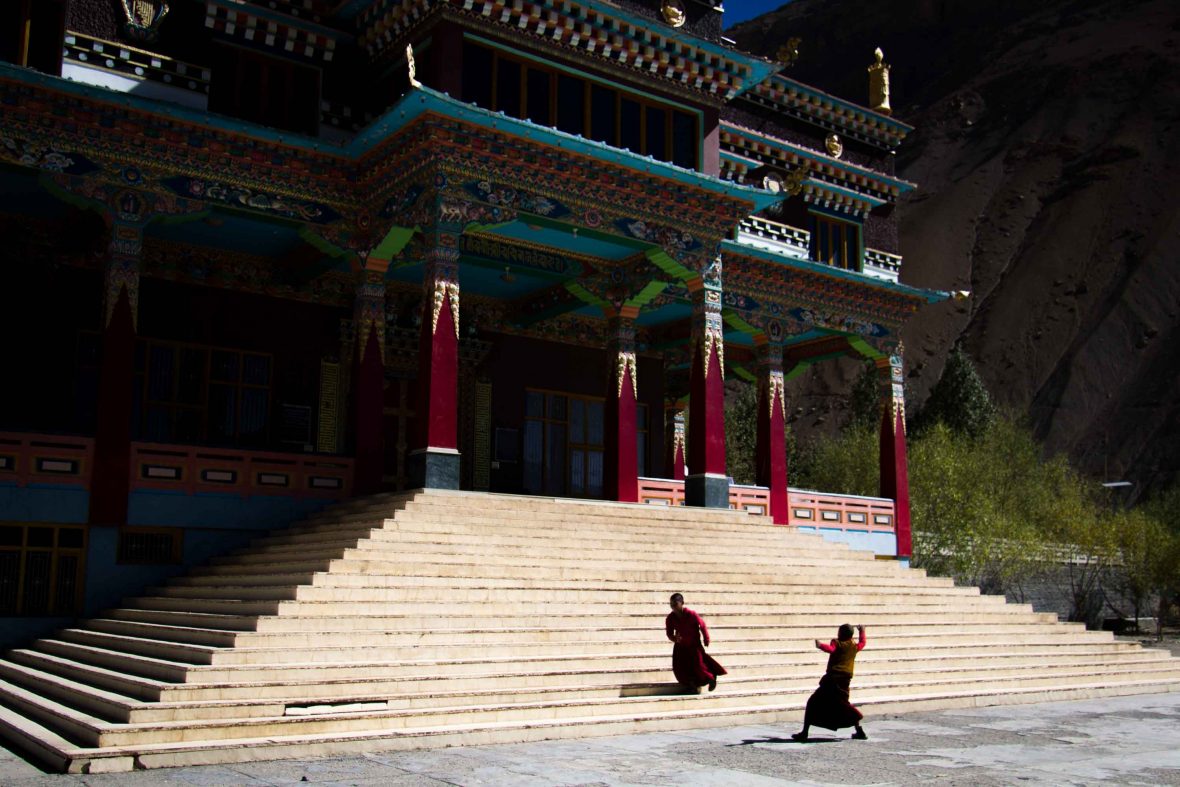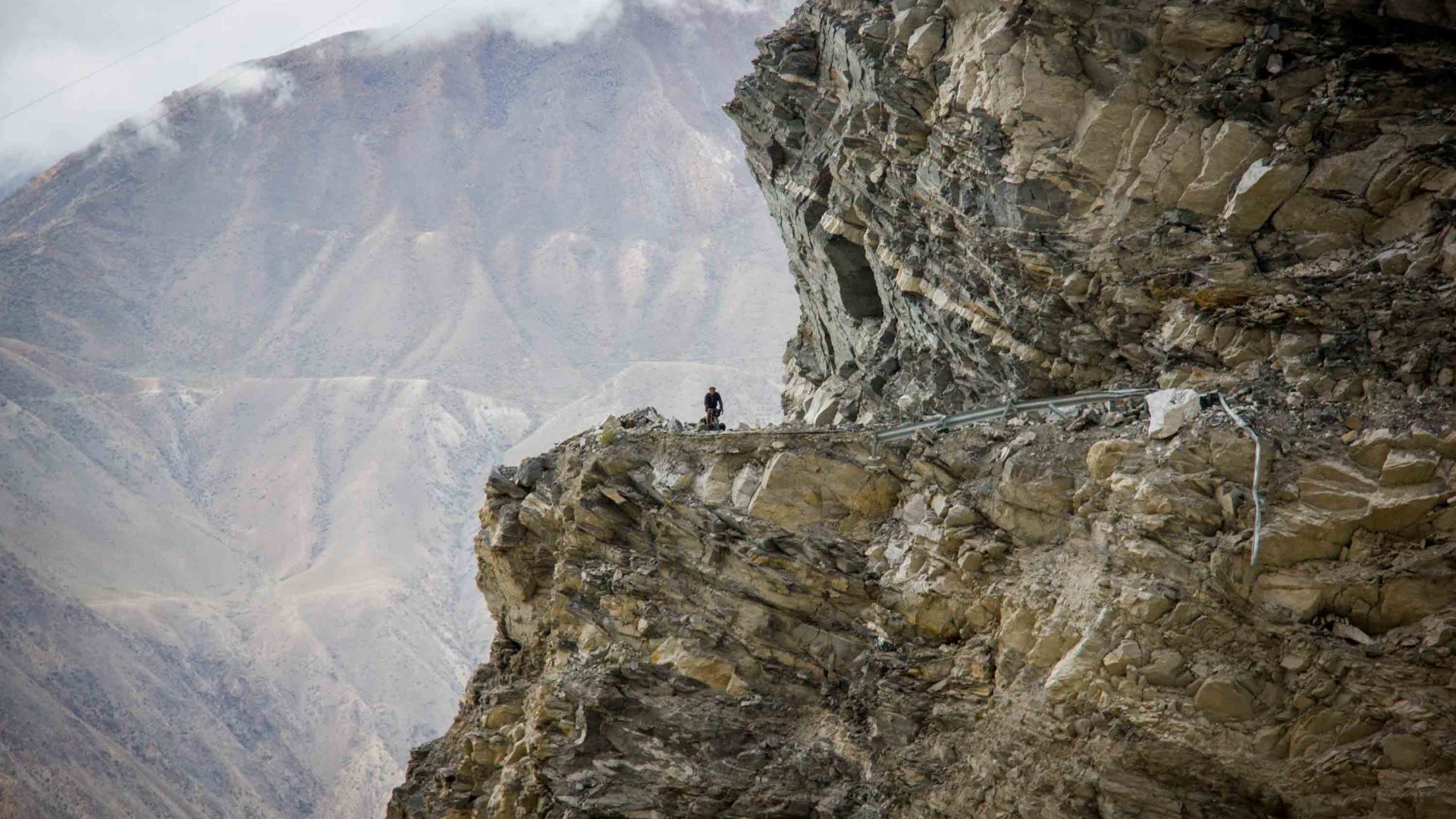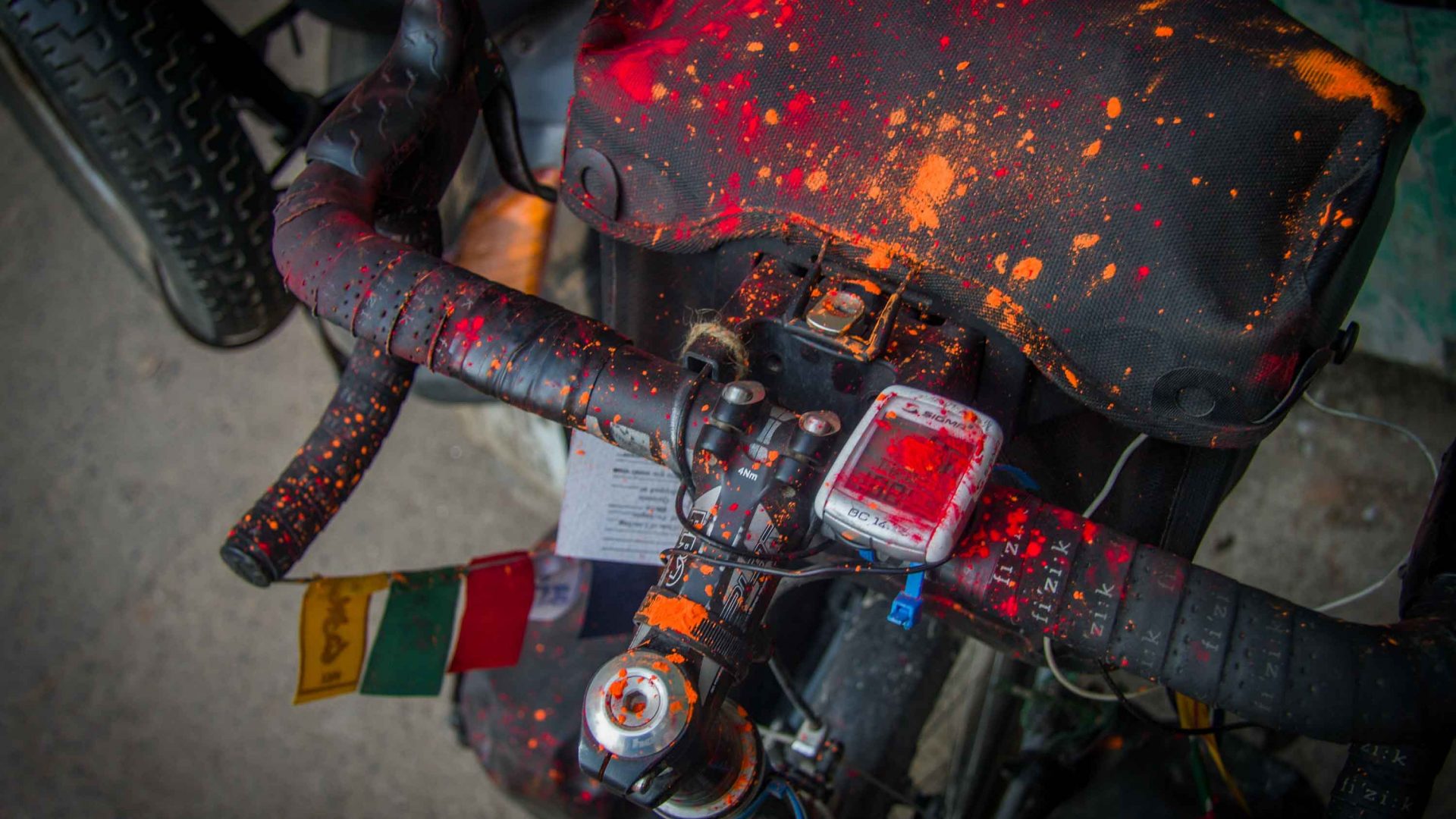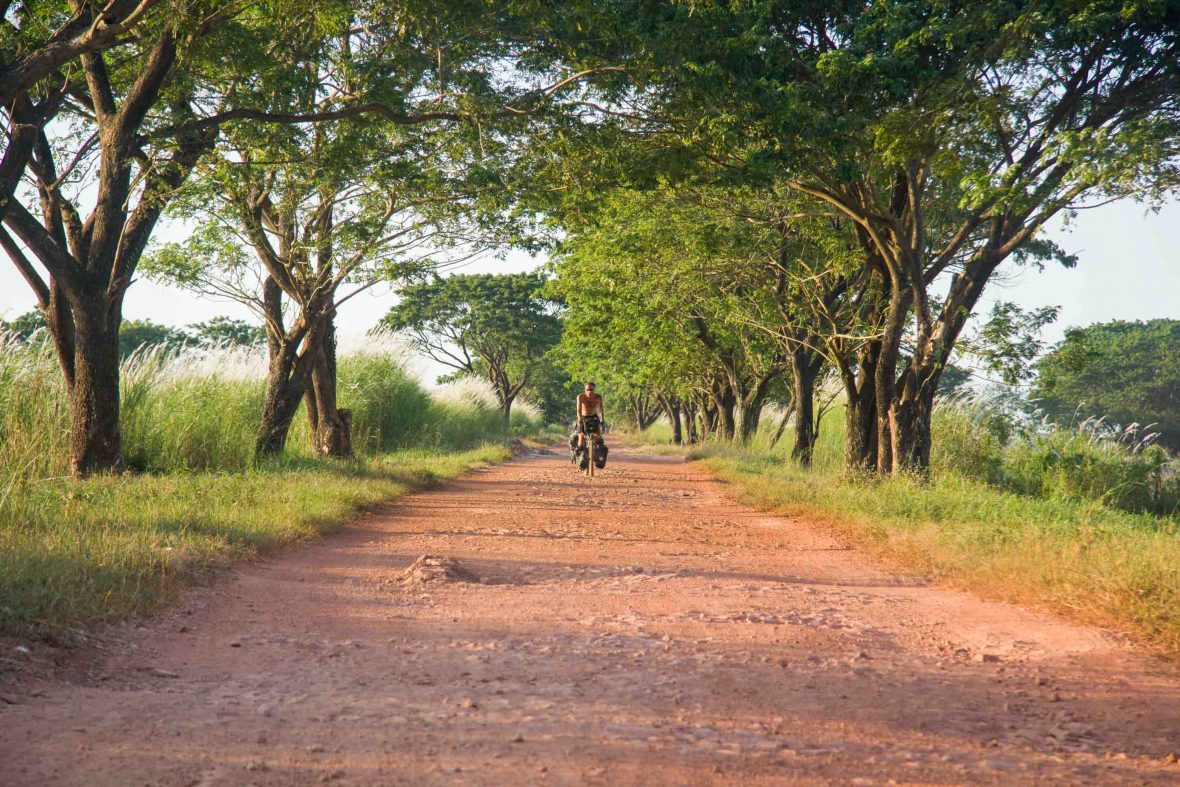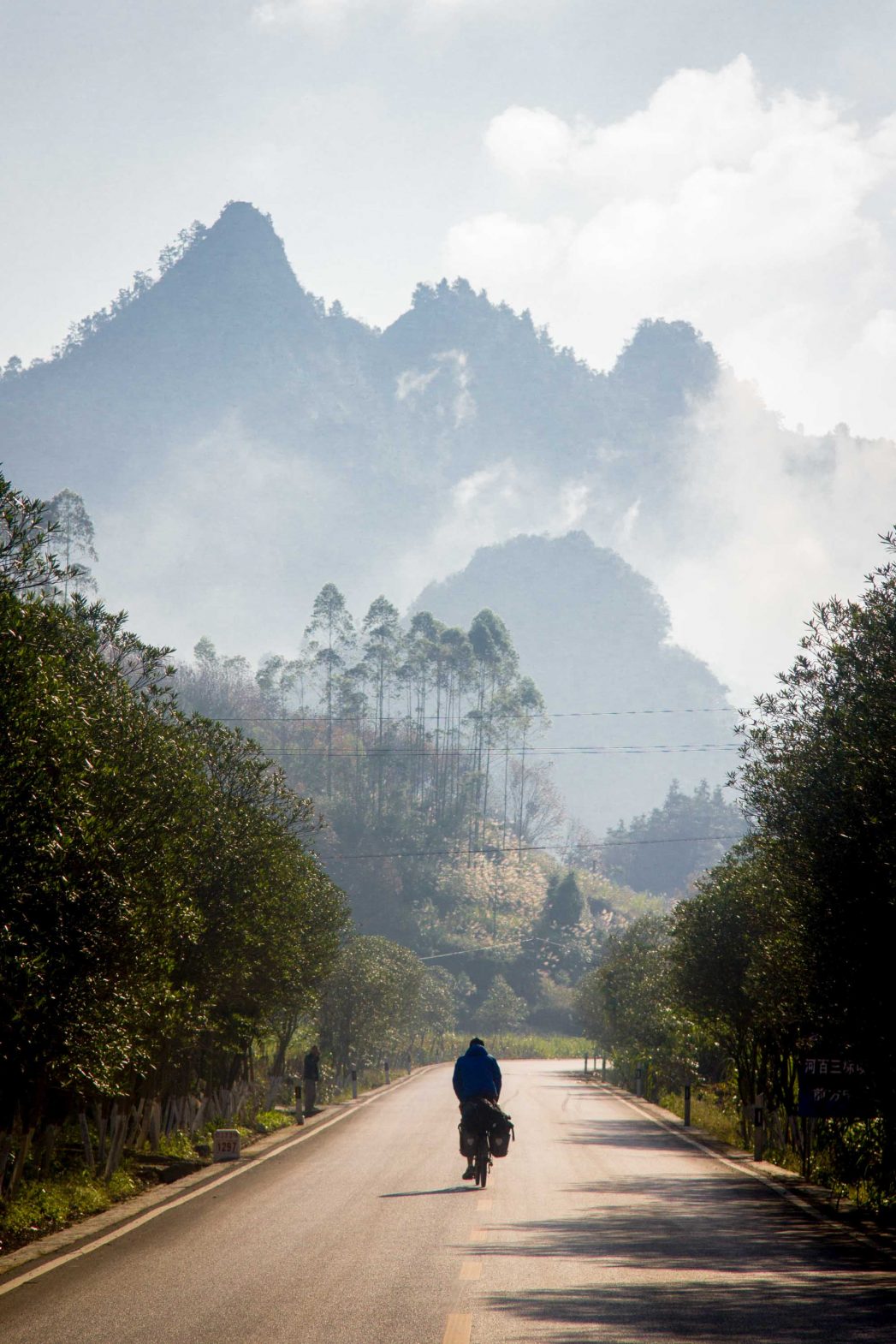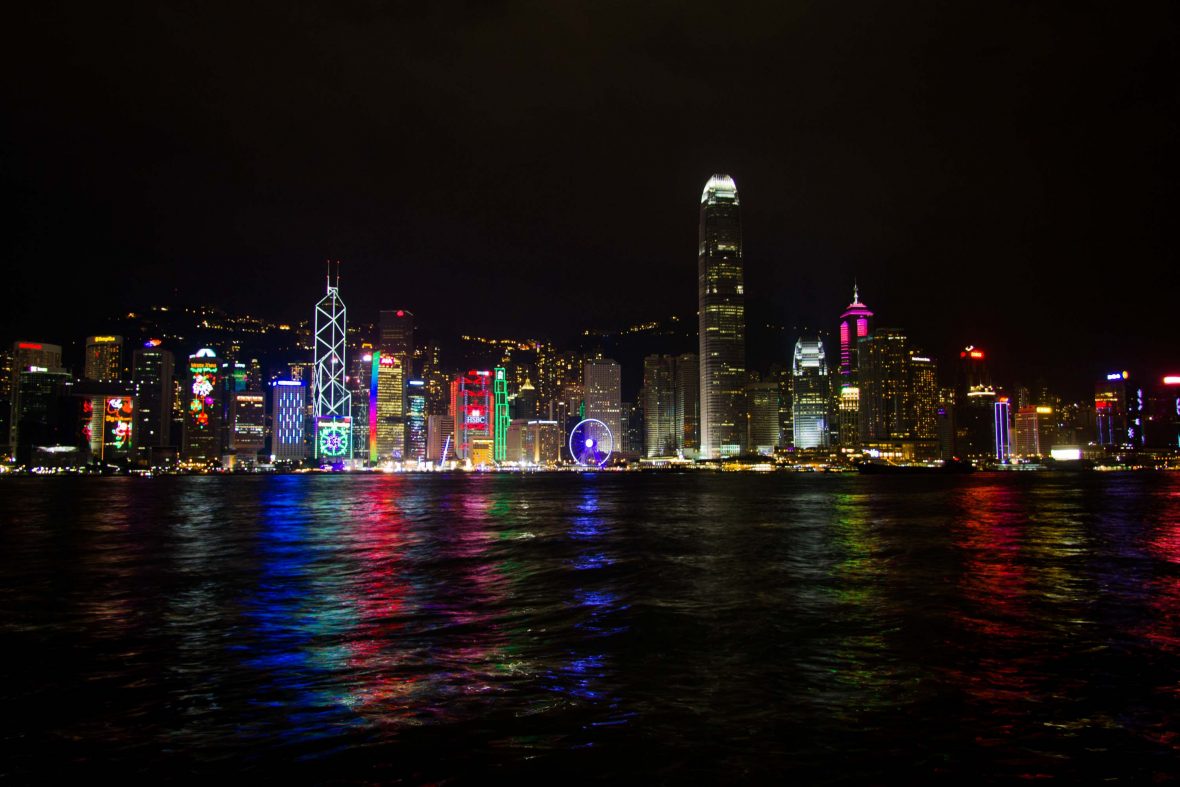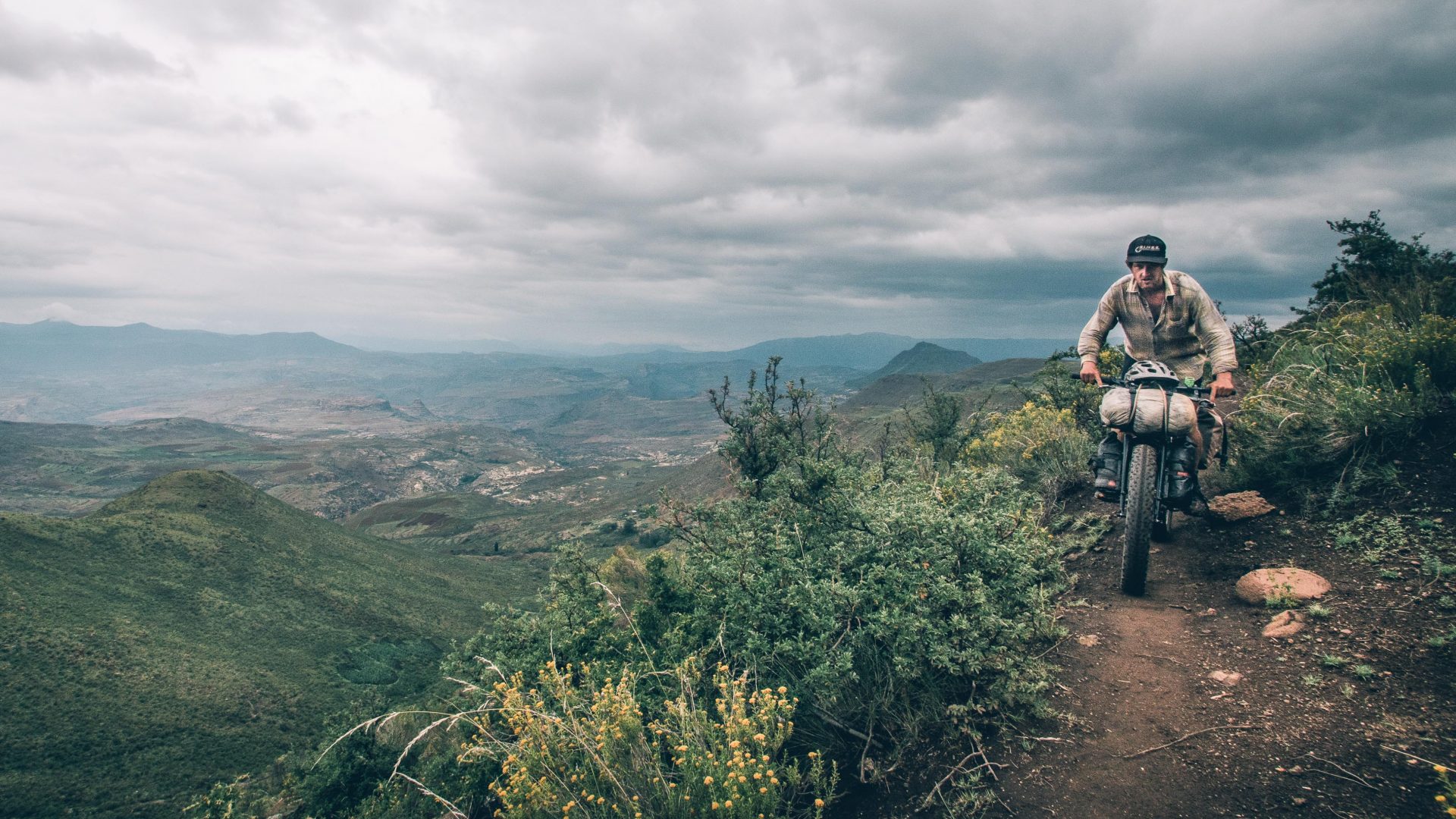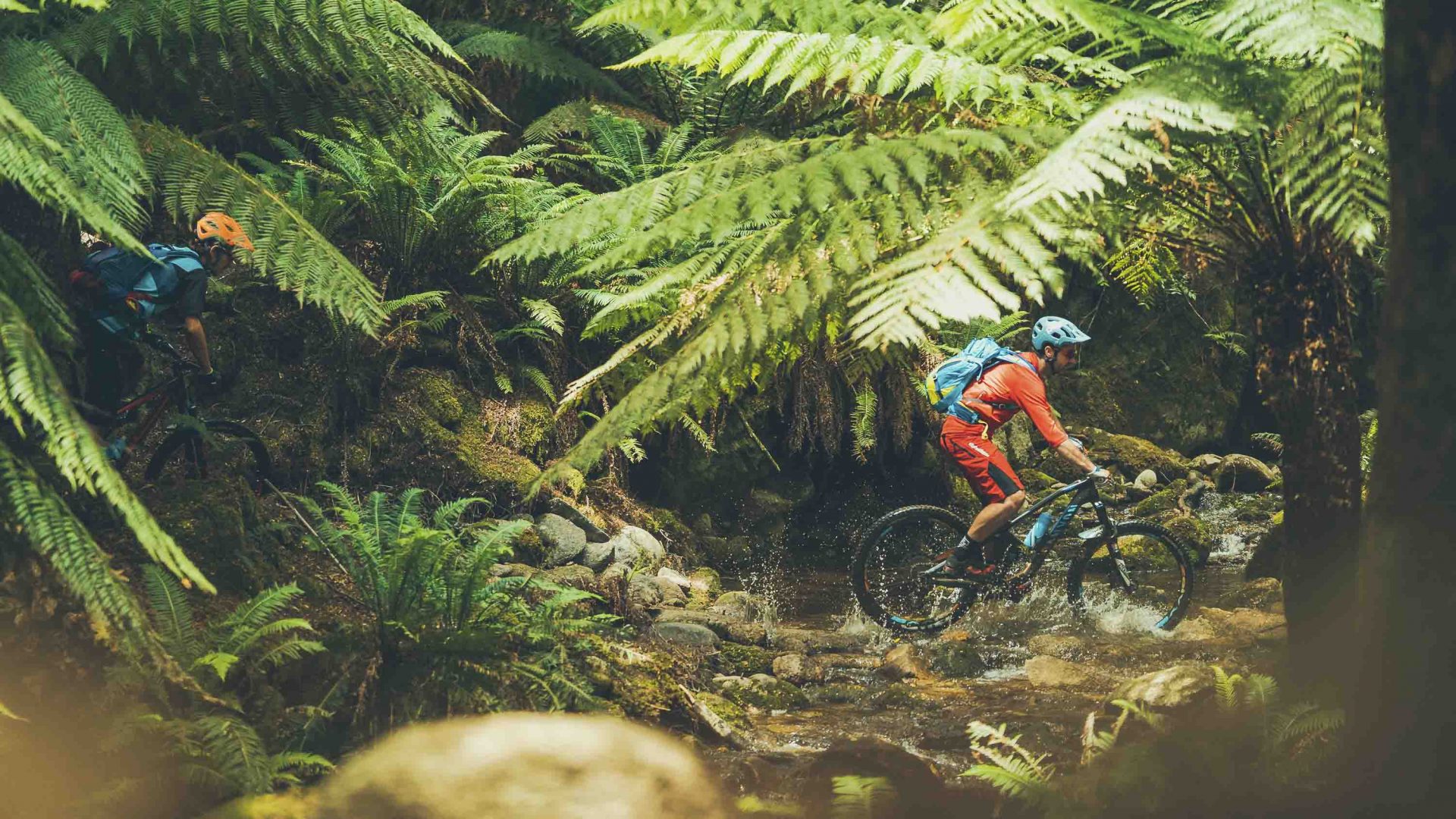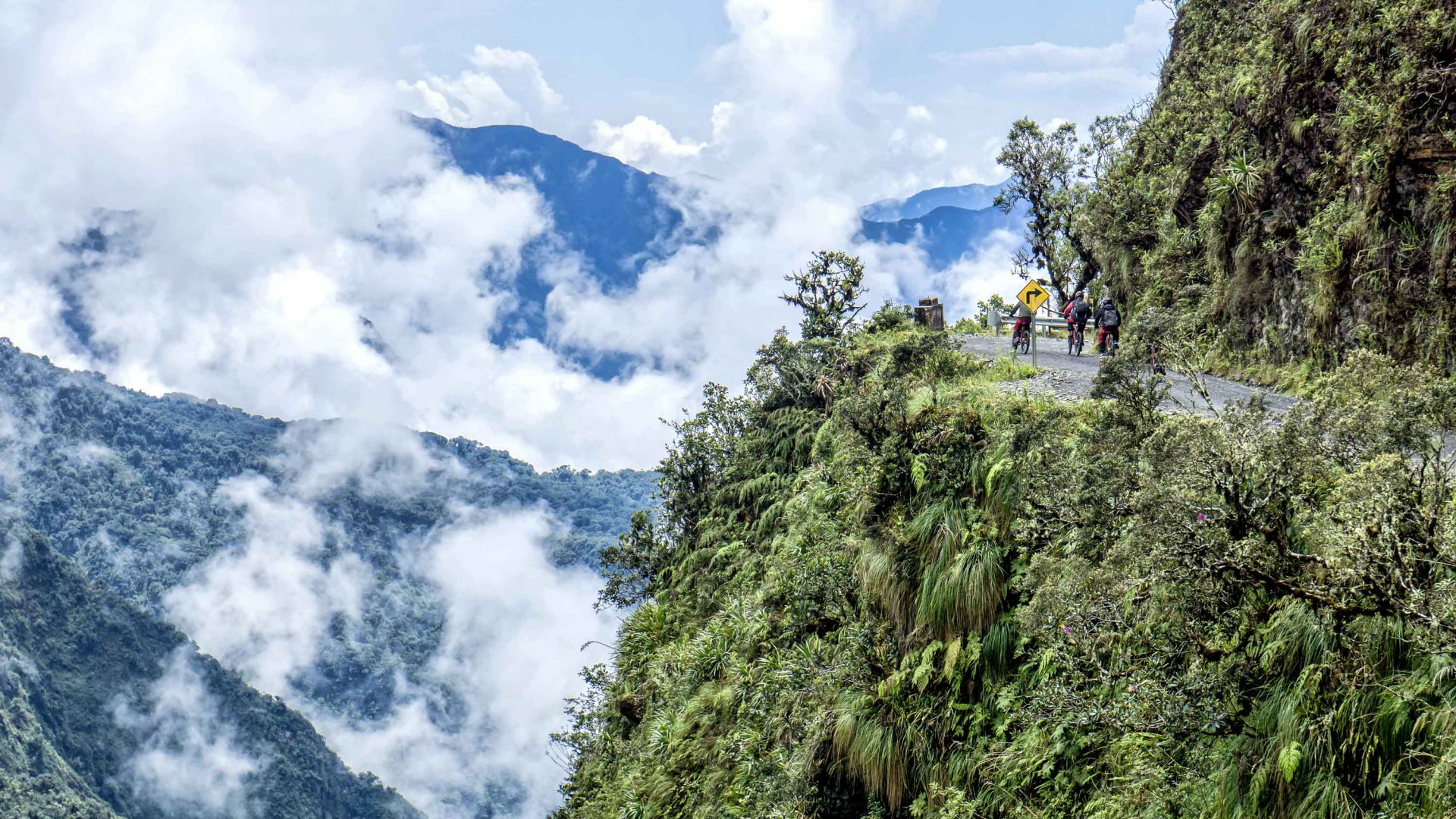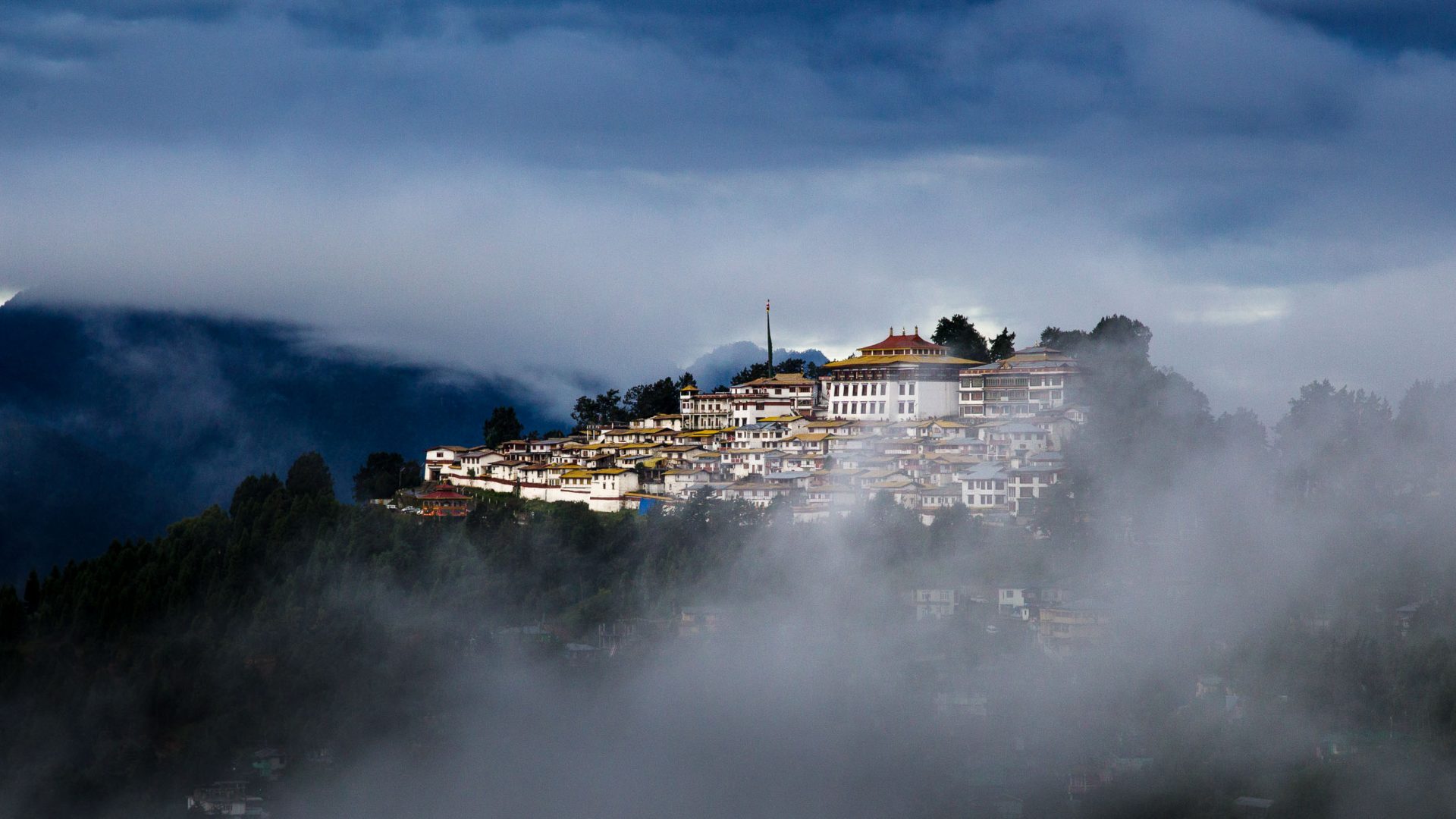In 2015, Joshua Cunningham rode his bike from London to Hong Kong. His journey took him some 12 months and 21,000 kilometers (13,000 miles), through 26 countries. Here, he shares some of the photographs and tales he collected along the way.
“It is by riding a bicycle that you learn the contours of a country best,” Ernest Hemingway once wrote, “since you have to sweat up the hills and coast down them.”
The bicycle travel experience is one of complete immersion—in place, people, terrain, climate, culture and cuisine. By traveling through a region, as opposed to skipping between locations within it, you have yourself the opportunity to see everything the guidebooks literally miss out—and everything that they would actively choose to avoid too.
And as I made my way across the Eurasian landmass in 2015, the depth of Hemingway’s words became abundantly clear.
On the subject of time off the bike—whether it’s asking for directions, buying fruit and vegetables or refusing cheap tobacco, as a cycle tourist, you’re continuously meeting new people. Not only that, but cycle tourists will forever be indebted to the sheer kindness of strangers. Being the recipient of so much help and hospitality restores your faith in the world and its inhabitants; it’s nice to realize that most people are fundamentally good.
RELATED: Cycling around the world on $5 a day
For example, in Azerbaijan, Nile put us up for the night in his modest roadside café. He brought us hot tea, showed us a darkened backroom, plugged in a heater, and said goodnight before bringing us chocolate bars and more tea. We were complete strangers to him, but his hospitality was a lesson to both me and my traveling companion
On another occasion, after navigating through Europe, the plains of inland Turkey proved a challenge. The bitter chill of a still-wintry March, combined with the empty expanses and snow-capped peaks of the country’s interior plateau, made riding difficult. At least the riding was more enjoyable than when the clay roads forced us to walk our bikes for hours at a time, stopping every now and then to free the wheels.
And that road gave us plenty of opportunities to get to know the local shepherds. As well as one of the oldest professions, shepherding must also be one of the world’s most prolific, practised across a huge number of nations and cultures by men and women, old and young. Even in some of the most remote regions and inhospitable conditions, we would meet shepherds on the road and do our best to trade a few pleasantries; each party equally surprised to have some company for a while.
RELATED: Uzbekistan’s modern-day pilgrims
We crossed the Caspian Sea on a three-day freight ship journey from Azerbaijan, and arrived at the edge of the Mangyshlak Peninsula in Kazakhstan. What lay ahead were hundreds of miles of absolutely nothing, in every direction.
We rode. And as the Kazakh steppe merged seamlessly into the Uzbek desert, we were faced with the familiar challenge of long distances between towns and resupply points. Every few days, we would hit upon a welcoming oasis of life and take time to stop and recalibrate.
After two weeks of traveling from the Tajik capital of Dushanbe, east along the Afghan border and over the first passes of the Pamir plateau, we descended into the former Soviet military post of Murghab. The only significant settlement for hundreds of square miles, it was our sole opportunity to fix broken bikes, resupply food stocks, and begin the lengthy process of applying for our Pakistan visas before heading back into the unconnected world.
RELATED: How mountain biking is saving tiny towns
As we left Tajikistan behind, the alpine meadows and rolling green pastures of Kyrgyzstan were a welcome sight. The two lads pictured above were the first people we met after crossing the border—they’d run to intersect our path after spotting us from their yurt. After seven weeks in the country, waiting for our passports to return from an agency in the UK, we’d meet many more like them; nomadic families who spend their winters in the valley villages, and their summers tending horses up in the high pastures.
We entered China and were surprised to find that the much of the local population shared their heritage with lands beyond their borders—as seen above by a Kyrgyz yurt camp along the Khunjerab pass that forms the Pakistani border. This junction of Chinese, Kyrgyz, Tajik, Afghan and Pakistani borders is extremely culturally porous, and goes to show how meaningless a line drawn on a map can sometimes be.
To get out of the high mountains of Pakistan, we first had to cross Attabad Lake. Formed after a landslide submerged an entire village and the famous Karakoram Highway road, the lake is now a barrier between the far north of Pakistan and the rest of the country. Cars, buses, trucks, livestock, food, people—everything, including us—must be loaded onto precariously tiny ferries and shipped across. While irresistibly beautiful for an outsider, it has been a life-changing event for thousands of locals, who wait eagerly for the new road, perched on the cliff side above, to be completed.
